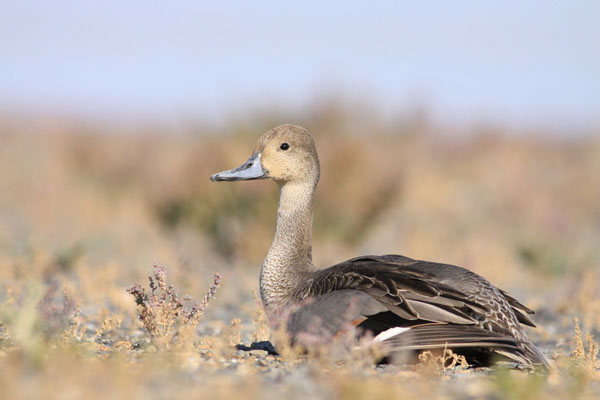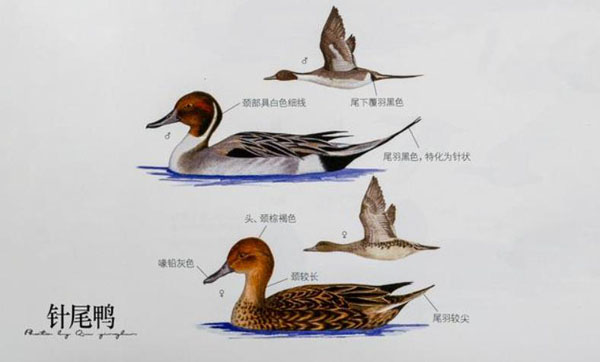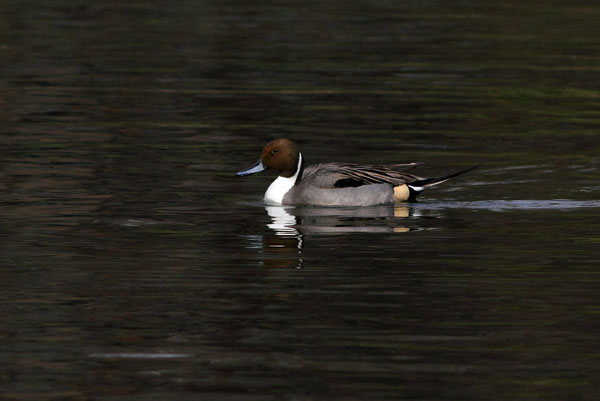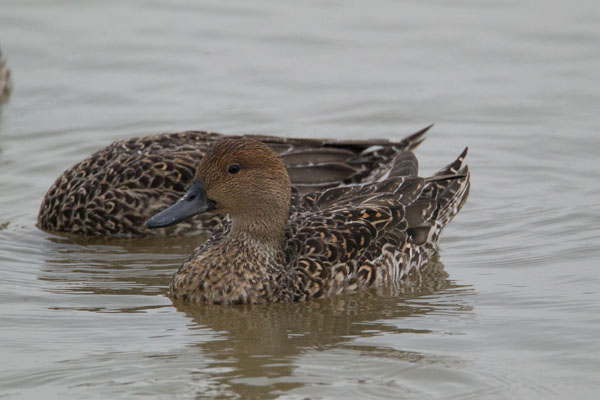Anas acuta
IUCN
LCBasic Information
Scientific classification
- name:Anas acuta
- Scientific Name:Pintail duck, long-tailed duck, long-tailed duck, rifle duck, middle duck, northern pintail duck,Anas acuta,Northern Pintail
- Outline:Waterfowl
- Family:Anseriformes Anatidae Duck
Vital signs
- length:43-72cm
- Weight:0.5-1kg
- lifetime:6-8years
Feature
The male bird is blue-gray in color, while the female bird is black in color.
Distribution and Habitat
In China, it breeds in the northwest region and hibernates in the Yangtze River and waters to its south, including Taiwan Island and Hainan Island. Abroad, it breeds in Europe, Asia and northern North America, and hibernates in southern Europe, northern Africa, the Middle East, South Asia, East Asia and Southeast Asia, as well as Central and North America.
During the wintering period, it inhabits various types of rivers, lakes, swamps, saline-alkali wetlands, ponds, open coastal areas and bays. During the breeding period, it mainly inhabits large inland lakes, slow-flowing rivers, river bays and nearby swamps and wet grasslands.
Appearance
A slender river duck, the male has a brown head and nape, white front neck to chest, gray worm-like spots on both sides, white underbelly, green wings, and black and elongated tail feathers. The female is brown with scaly markings, lighter throat and front neck, brown wings, and a slimmer neck and more pointed tail feathers than other ducks. The iris is dark brown, the bill is blue-gray in males and black in females, and the feet are gray-black.
Details
Pintail duck is a medium-sized waterfowl of the class Aves and the family Anatidae, belonging to the family of water ducks. It likes to live in groups, especially in the migration season and winter, often in large groups of dozens to hundreds of individuals. It moves and rests mostly in the waters near the shore and in open sandy beaches and muddy ground. It swims lightly and agilely, and is also good at flying, and is fast and powerful. It is also good at walking on land. It is timid and alert, and hides in reeds with water or wanders or rests in the water far from the shore during the day. It only goes to the shallow water by the water to look for food at dusk and night, and flies away immediately at the slightest movement.

Pintail ducks mainly feed on grass seeds and other aquatic plants, such as duckweed, pine algae, morning glory seeds, reeds, calamus and other plant sprouts and seeds, and also go to farmlands to forage for some scattered grains. During the breeding period, they mostly feed on aquatic invertebrates, such as freshwater snails, mollusks and aquatic insects. They often forage in shallow water near the water at dusk and at night, and occasionally go to nearby farmlands to forage in autumn and winter.

The male is very quiet. The female makes a low guttural kwuk-kwuk sound.

They begin to migrate from their wintering grounds in southern China in late February and early March each year, and arrive in large numbers in North China and Northeast China from early to mid-March. They have basically arrived at their breeding grounds in northern China or migrated away from China from early to mid-April, and a few individuals still stay in Liaoning Province, China as late as late April and early May, perhaps because they do not participate in the breeding that year or stay in Northeast China for breeding. A small number of autumn migration groups have arrived in Northeast China and North China in mid-to-late September. A large number of them migrate south from early to late October, and a few as late as late November. During migration, they often gather in large groups of dozens or even hundreds of them.

The Pintail Duck is not only widely distributed, but also has a very rich population. The breeding population in North America is about 6 million, the wintering population in northwestern Europe is about 50,000, and about 250,000 in the Mediterranean and the Black Sea; in Africa, there are 90,000 in Senegal, 495,000 in Mali, and 220,000 in Lake Chad. In Asia, according to the Asian Midwinter Waterbird Survey organized by the World Waterfowl Research Bureau in 1990, there are 25,277 pintail ducks wintering in China, 162,681 in Japan, 2,695 in North Korea, 2,939 in South Korea, 93,205 in Southwest Asia, 321,779 in South Asia, and 8,114 in Southeast Asia. The total number of wintering populations in Asia is 616,690, of which China accounts for only 4%. According to historical records, pintail ducks are not only widely distributed in China, but also quite abundant in number, and are a common and important hunting target. The reduction in numbers is mainly due to hunting and the deterioration of the ecological environment. Attention should be paid to the protection of its environment and population.








